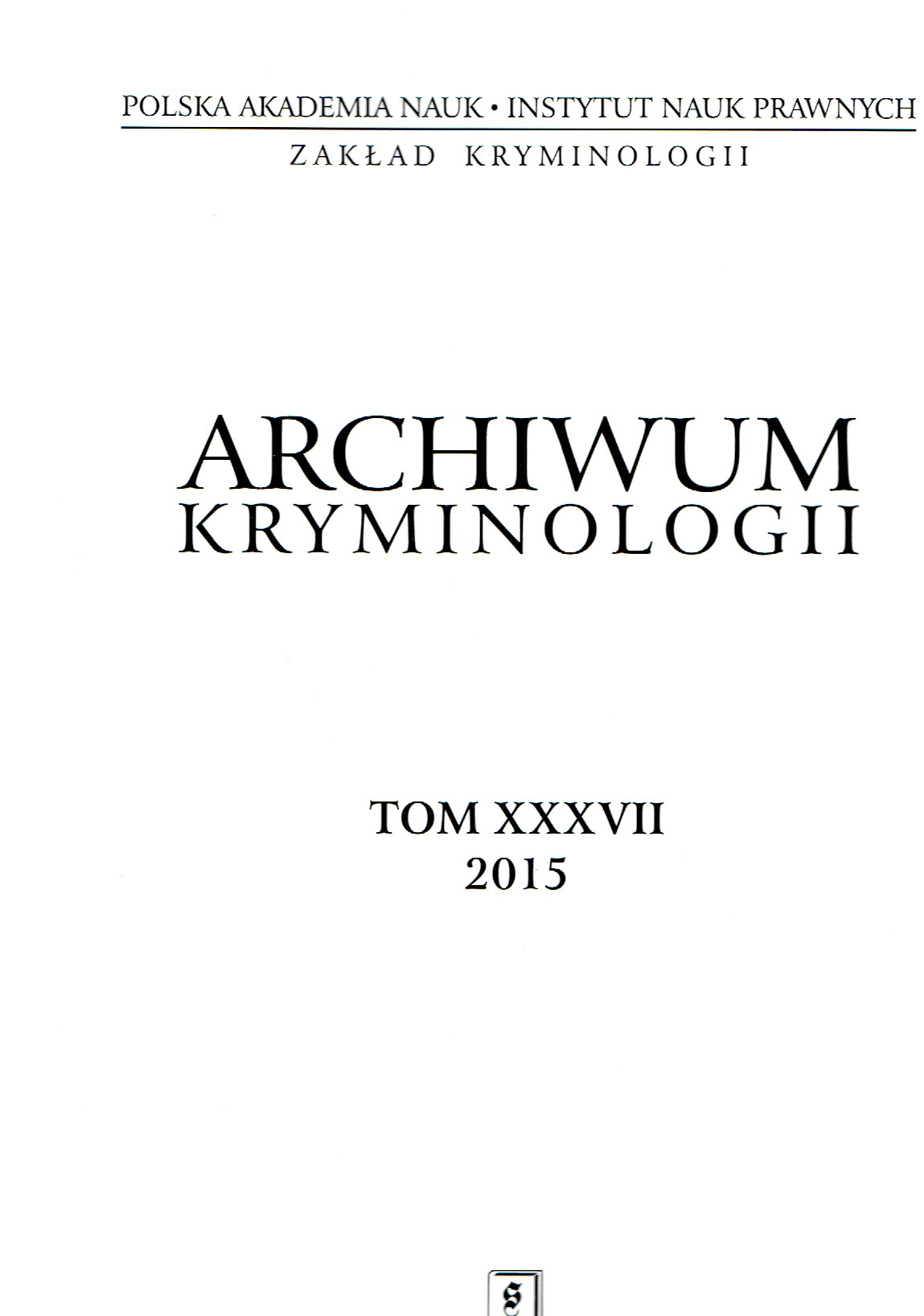POSTRZEGANIE OFIARY HANDLU KOBIETAMI W CELU PROSTYTUCJI PRZEZ FUNKCJONARIUSZY ORGANÓW ŚCIGANIA – WYNIKI BADAŃ ANKIETOWYCH
The Perception of Victims of Trafficking Women for Prostitution by Law Enforcement Officials – Results from Research Surveys
Author(s): Maryla Koss-GoryszewskaSubject(s): Law, Constitution, Jurisprudence, Criminal Law
Published by: Instytut Nauk Prawnych PAN
Keywords: victim; prostitution; trafficking women
Summary/Abstract: The subject of the following text was the image of victims of trafficking womenfor prostitution amongst police officers and border officers. For this purpose, surveyresearch was carried out on 114 officers from these units. Their results enabled anindication of how victims of trafficking women for prostitution are perceived amongst those surveyed. Law enforcement workers are a group that, because of the profession they do, maypotentially have the most frequent contact with human trafficking offenders. At thesame time, they are a part of society, so doubtlessly they are influenced by commonlyoccurring stereotypes and schemas. That is why it is essential to diagnose the methodsof perception of victims of human trafficking by law enforcement officers. The methodin which a victim of this crime is perceived may have a large significance, firstly for thesubjective treatment of aggrieved women, and secondly for prosecutors.The research results indicate that, in the opinion of the surveyed, victims arecharacterised above all as naive and submissive. Quite often, the respondents alsoindicated the aggrieved individuals had weak psyches, and were mindless and fearful.Excluding a few qualities characterising victims in a neutral manner, the vast majoritywere negatively coloured, putting the victim of human trafficking in a bad light. Theywere perceived as compliant, overly trusting, mentally weak and passive. On severaloccasions, answers appear in which victims were presented as greedy, devious womenwho had been lost to rapacity. In the question about the character qualities of victims,several people indicated their external appearance, which might signify a strongconnection between victims of the discussed crime and an attractive appearance. Mostlikely this is due to the fact that the researched form of human trafficking is linked withthe sexual sphere.The main source for acquiring knowledge on the subject of human traffickingwas acknowledged by the respondents as being the media as well as any training theyhad undergone. This may seem disturbing since the image of human trafficking inthe media, other than the fact it is heavily oversimplified, strongly relies on genderstereotypes which can affect perceptions and thus the way victims of human traffickingare processed. Other than this, a significant majority of police officers (84%) andborder guards (81%) had undergone training on the subject of human trafficking.Equally important is that a very small number of respondents had had in their lives anycontact with victims of human trafficking (17% of surveyed border officials and 35%of police officers). Despite this, almost everybody had deep-rooted definite beliefs todo with victims of female trafficking. Most of these convictions are therefore based onstereotypes.Amongst the respondents, there was a widespread conviction that victims of humantrafficking are predominantly women (around three quarters of all respondents). For thesurveyed, a victim of human trafficking is most often an aggrieved person forced intoprostitution – respondents said this form of crime was the most frequently occurring. A significant majority of the respondents acknowledged that the female-victim did notknow that they would be working as a prostitute. Most likely this is linked to the fact thatvictims of female trafficking are presented above all as young, inexperienced and naivegirls. This is at odds with the image of a calculating prostitute who knew the goal of herjourney. It is worth mentioning too about the distribution of answers to the questionin which surveyed police had to answer if it is more appropriate to quickly interrogatevictims or to grant them time to think. Almost 70% of those surveyed admitted theythought it more appropriate to quickly interrogate the victim. Particularly substantial were the justifications for the respondents’ choice of answers. Their analysis allows usto conclude that the respondents perceive victims of human trafficking instrumentally– above all, they see them as a tool for the effective prosecution of those committing human trafficking. This is shown by the fact they judged it important to interrogate thevictim as quickly as possible so that they could gather evidence. Some of the officersalso expressed their negative attitude to victims by accusing them of the possibility ofscheming, the susceptibility for lying or a desire for revenge on the perpetrators. Examining the research evidence suggests this is reflected in relation to the practicalconsequences of the perceptions of victims of human trafficking by law enforcementofficials as passive, naive and helpless women. Namely, these kinds of thoughts maylead to one of these victims, whose qualities fit with the commonly-held stereotypes,being identified by a law enforcement representative. Similarly, help may only be givento those people who the officers believe “really” need and deserve it (i.e. they fit theimage of a defenceless helpless “ideal” victim). Reaching law enforcement agencies andbeyond – such as the justice system – may only be achievable by those victims that fitthe stereotypes, while other people may be ignored – for example, those who had beenused for something other than sex, or older people, the active or those not physicallyattractive.
Journal: Archiwum Kryminologii
- Issue Year: 2015
- Issue No: XXXVII
- Page Range: 223-252
- Page Count: 30
- Language: Polish

